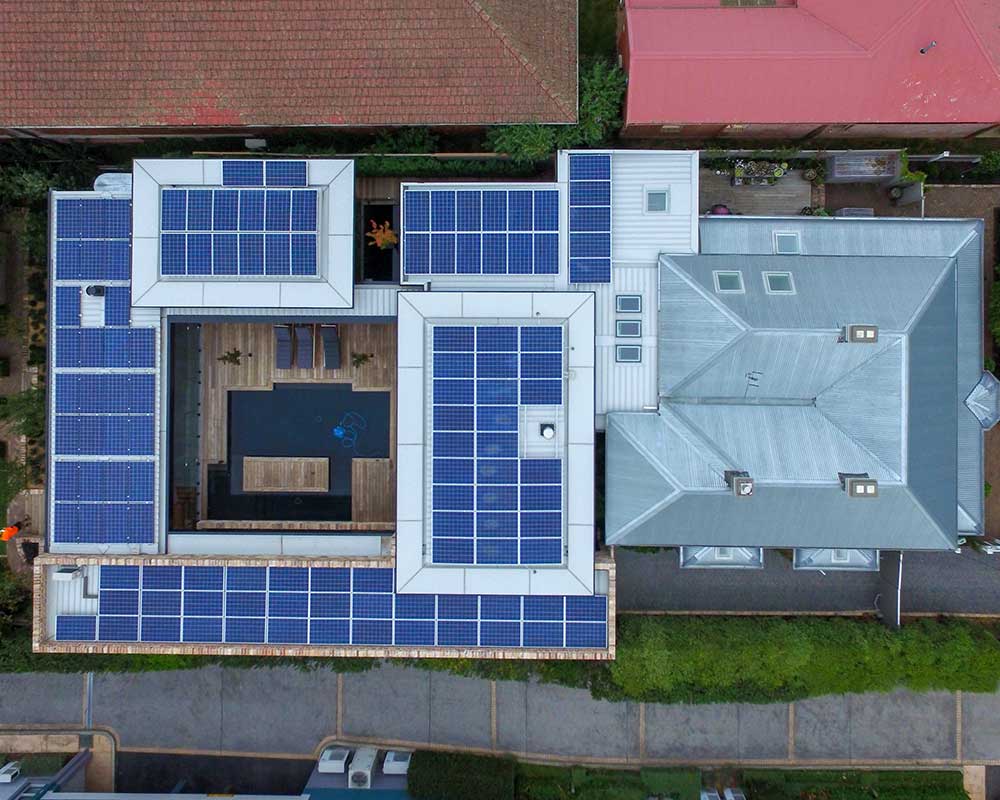how it works
we harness
geothermal energy
Geothermal energy is a free and unlimited resource. While outdoor temperatures fluctuate with the seasons, underground temperatures do not. About 1.5 metres below the Earth’s surface, temperatures remain relatively stable all year round. Using advanced geoexchange technology, we can leverage the stored geothermal energy in the earth to heat and cool residential homes, commercial buildings, pools and spas, and provide domestic hot water.
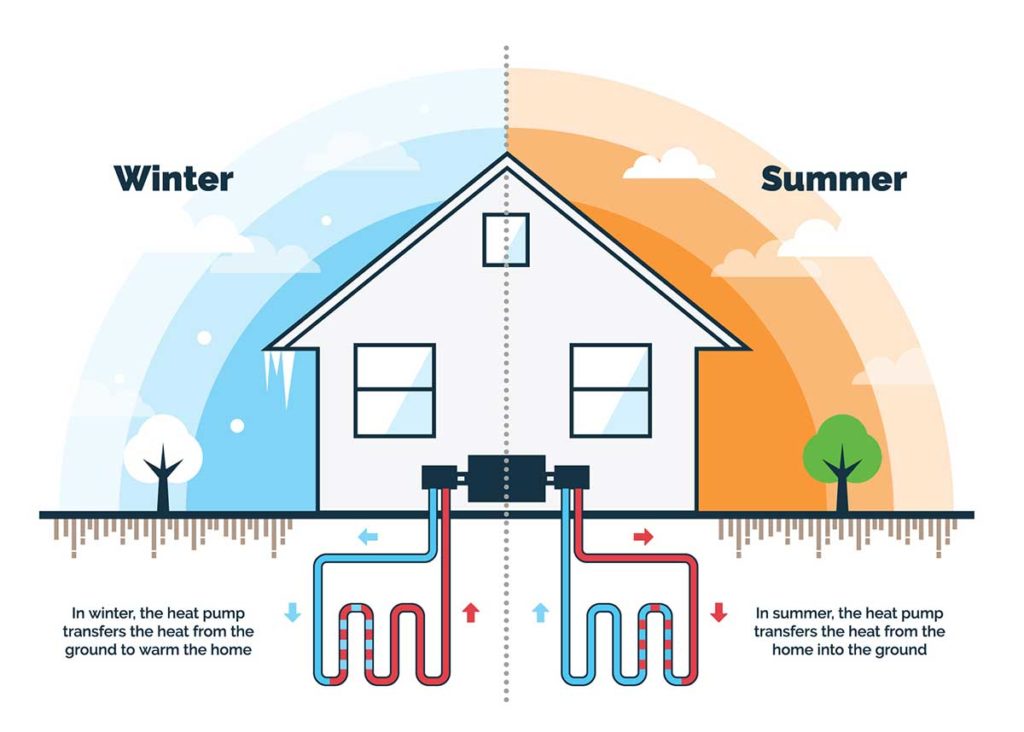
what is geoexchange?
The way we harness geothermal energy for heating and cooling is through what’s called a geoexchange system. Put simply, geoexchange is the transferral of energy from one source to another. In a practical sense, this can mean exchanging the stored heat in the earth to your home using a heat pump to condense the energy.
This is most commonly done by laying tailor-made pipes in the ground (called a ‘ground loop’) that are connected to a heat pump that pushes water through the loop. In winter, the water in the underground pipes absorbs heat from the surrounding earth and carries it back to the heat pump, which condenses the heat, and then distributes it throughout the home. In summer, the process reverses and heat from the home is rejected into the earth.
types of geothermal loops
horizontal ground loop
vertical ground loop
pond loop
open loop
aerothermal
This technology allows us to harness the energy stored in the outside air for heating, cooling and hot water. In this method, a ground source heat pump is connected to an Ecoforest dry cooler which pushes air over pipes that contain a brine/water solution. The ambient temperature of the outside air allows the heat pump to extract energy, condense it, and deliver it throughout the home.
An aerothermal heating and cooling solution can be more cost-effective in the short-term, as there are less installation costs than a geothermal system. However, aerothermal does not provide the same level of energy efficiency as a geothermal system, which is often more cost-effective in the long term.
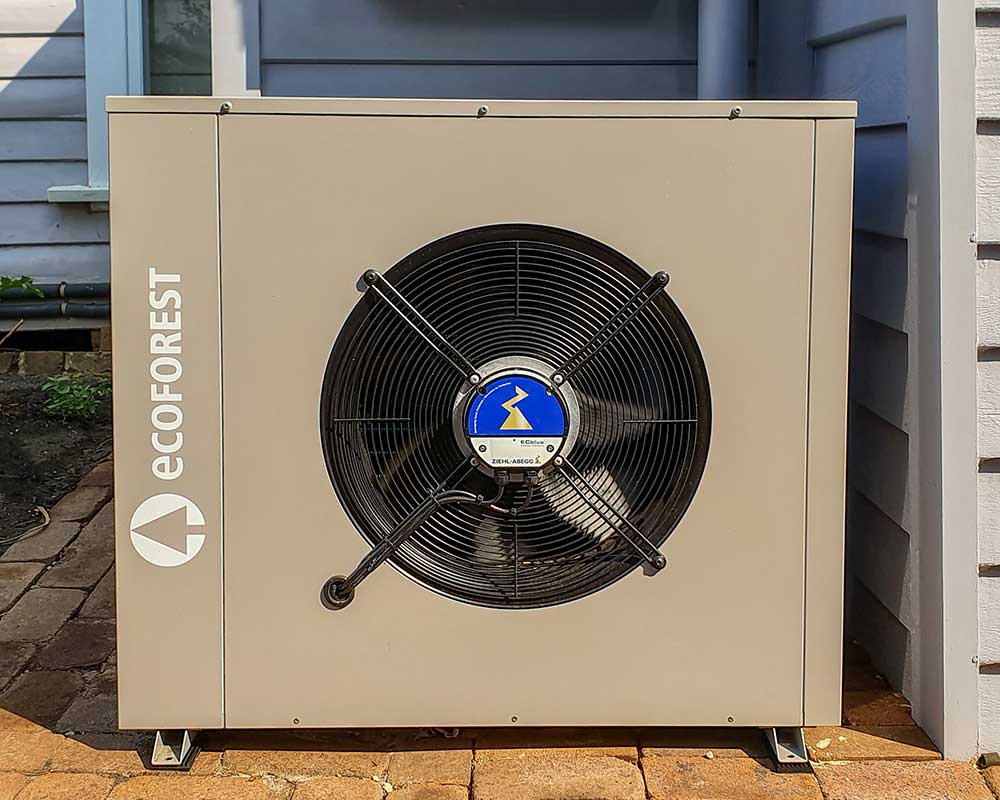
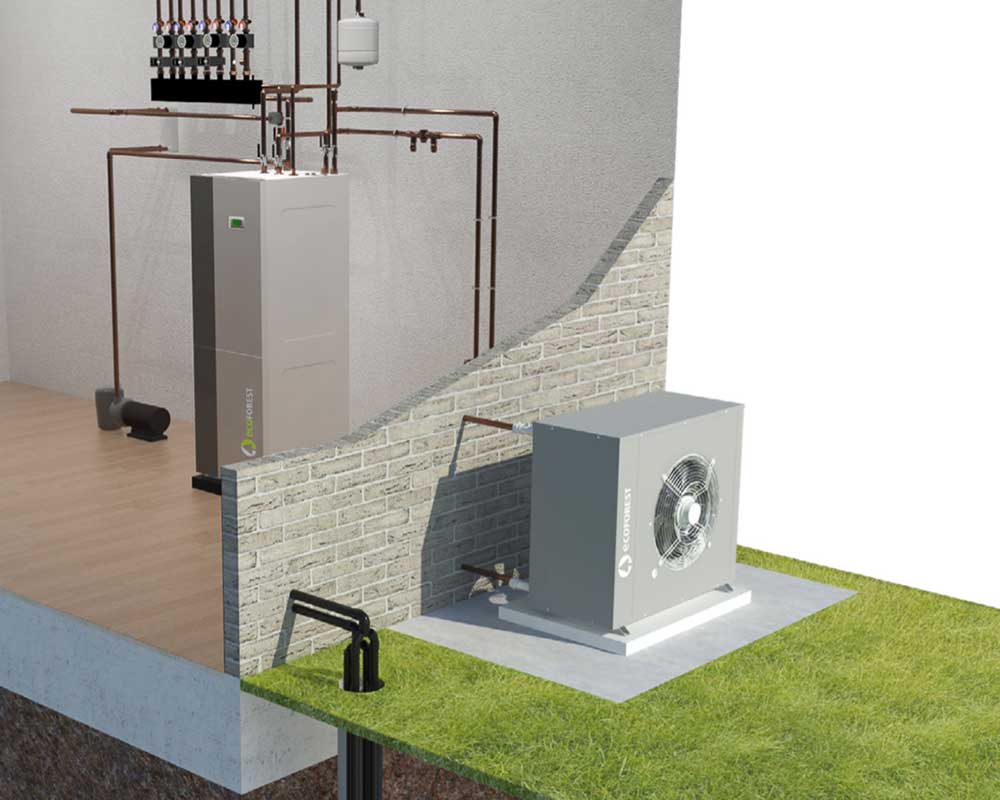
hybrid solutions
Thanks to Ecoforest’s advanced heat pump technology, we are able to create hybrid systems that contain geothermal AND aerothermal capabilities. Ecoforest’s inbuilt management system does this by sampling the temperatures from each source (ground and air) and selects the most energy efficient option at that time.
Hybrid installations can provide greater flexibility to homeowners and will be a more cost-effective option than a 100% geothermal ground loop system, both in capital expenditure and running costs.
air source heat pumps
With an air source heat pump, we are able to transfer the energy in the outside air into your home for heating, cooling and hot water. The Ecoforest ecoAIR Monoblock delivers high power and performance, even when outside temperatures are extreme.
An air source system is a fantastic option for people who want to do the right thing for the environment but may be limited by budget. However, air source heat pumps do not offer the same level of energy efficiency as a ground source heat pump system.
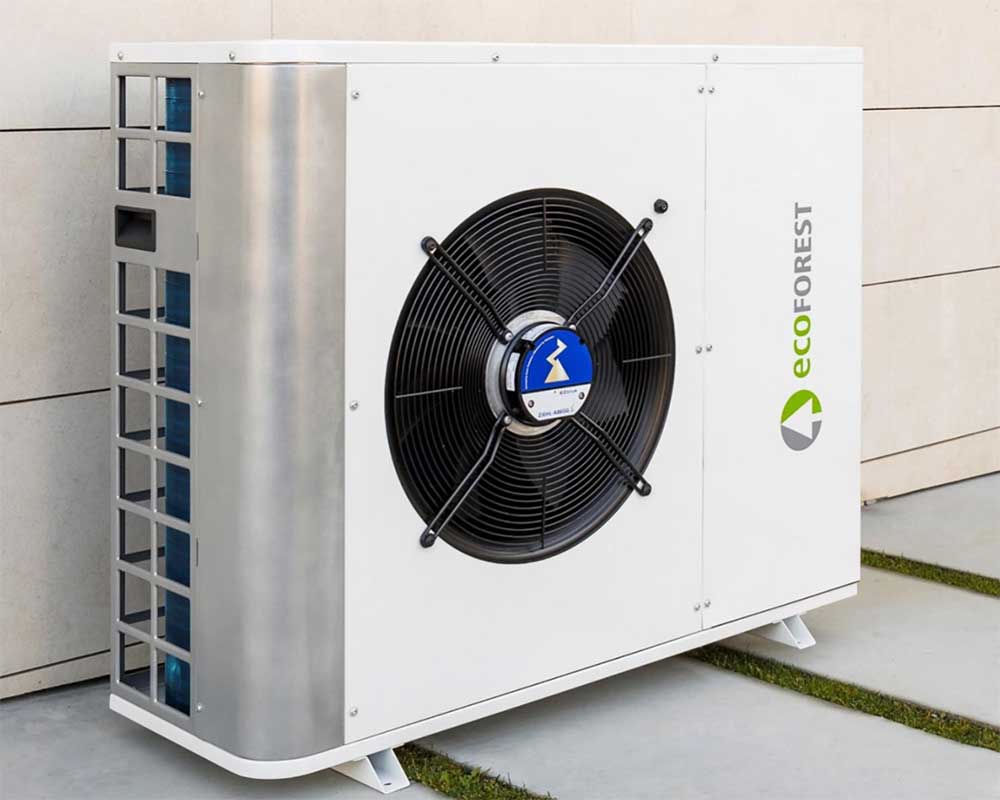
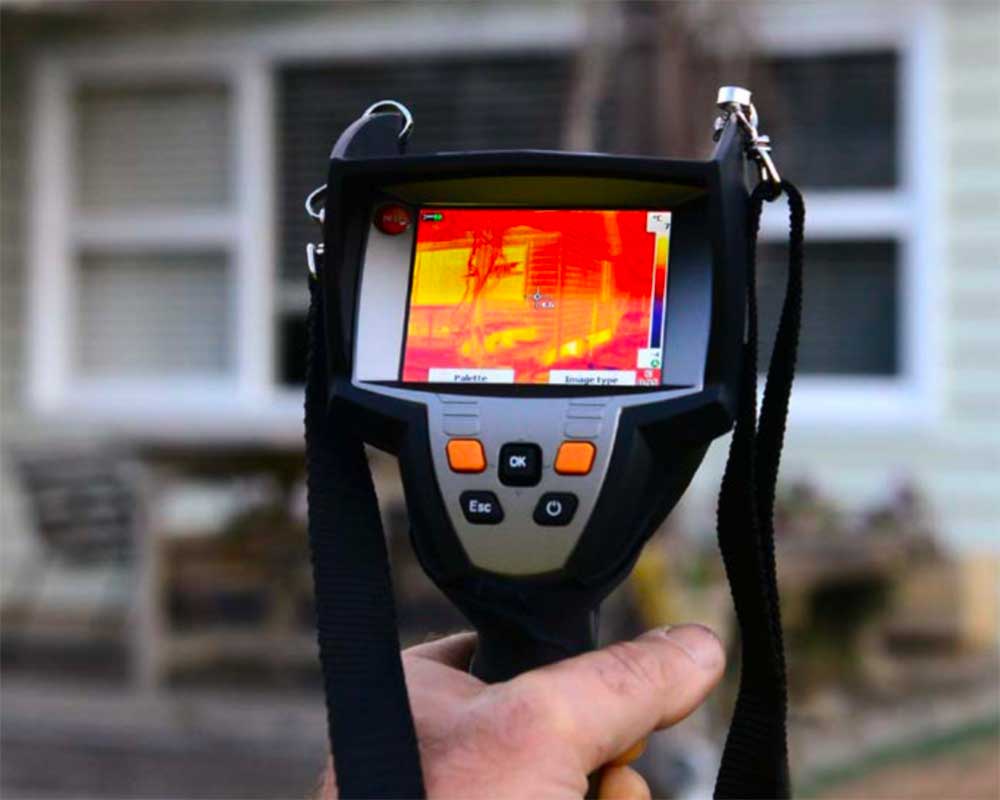
insulation
Installing an eco-friendly heating and cooling system means you need to commit to a well-insulated home. A geothermal system is constantly feeding small bits of conditioned air/energy into the space at frequent intervals. This process improves the energy efficiency of the system as it mitigates the need for large and prolonged periods of conditioning.
However, the process is significantly affected if the conditioned space is not adequately insulated. Ultimately, poor insulation will impact the efficiency of your system and will increase its running costs, as a leaky home will lose energy to the outside air.
solar solutions
We proactively work with solar energy installers to build solar PV into our systems where possible. This provides the customer with the capability of being energy neutral (net zero) or going ‘off-grid’.
Through our proactive approach and passion for the environment, we have been able to create systems for many clients that run ‘utility-free’ i.e. draw no power from the electrical grid to heat and cool their home, which means no more inflated utility bills.
